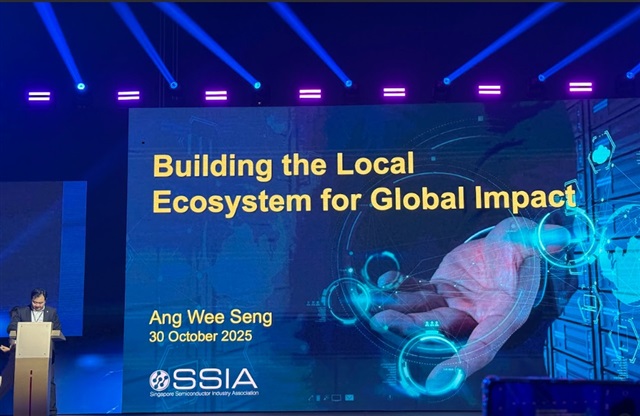Ang Wee Seng, Executive Director of the Singapore Semiconductor Industry Association (SSIA), told attendees at the 2025 Advanced Packaging Developers Conference (APDC) that the industry must strengthen collaboration and local networks to navigate geopolitical and resource challenges as it moves toward a projected US$1 trillion market by 2030.
Ang thanked STATS ChipPAC for hosting the event and described the company as a core player in Singapore's semiconductor ecosystem. He said Singapore's competitiveness rests on collaboration and trust rather than size or volume.
The semiconductor paradox
Ang said the industry faces what he called a "semiconductor paradox": AI chips are scaling rapidly and driving strong market growth, yet manufacturers are constrained by rising costs, limited energy and water resources, and growing geopolitical tension. He said uncertainty favors those who stay connected and collaborative.
Global semiconductor revenue is estimated at around US$700 billion today and is expected to reach US$1 trillion by 2030, with Asia contributing nearly one-third of that growth. Ang said future success will depend less on production capacity and more on how fast companies can innovate, how deeply they collaborate, and how resilient their ecosystems become.
Trust as the stabilizer
Ang said shifting trade patterns, competition between the United States and China, and export controls are reshaping supply chains. In this environment, "trust has become the new currency." He described Singapore as a neutral and reliable hub, well-positioned to serve as a stabilizing base for semiconductor operations.
Strengthening local ecosystems
To sustain its role, Ang said Singapore must tighten links between local partners, suppliers, and R&D institutions. He identified closer connections between OS manufacturers, SMEs, and research centers as key to turning complexity into opportunity.
SSIA's goal, he added, is to help develop the next generation of local companies and innovators. Knowledge transfer between research and production— "from the lab to the fab, and from the fab to our future"—will be central to this effort.
Ang also said SSIA plans to launch a new joint platform with the Institute of Microelectronics (IME) next year to expand collaboration and accelerate commercialization across Singapore's semiconductor ecosystem. He concluded that long-term growth will depend on cooperation, innovation, and investment in talent.

Credit: Digitimes
Article edited by Jack Wu



